- Home
- >
- Preservation Archaeology Blog
- >
- Bug Bling! How to Make a Necklace out of Beetle Le...
(September 28, 2023)—When I was visiting Mission Garden this past summer during the height of the fig harvest, I was amazed to see thousands of beetles eating ripe figs. I grew up calling these “June bugs,” but in the Southwest region, they are technically—wouldn’t you know it—Fig-eater beetles (Cotinis mutabilis)! These beetles love fruit and are also commonly found on ripened prickly pear fruit in July and August, during the summer monsoons.
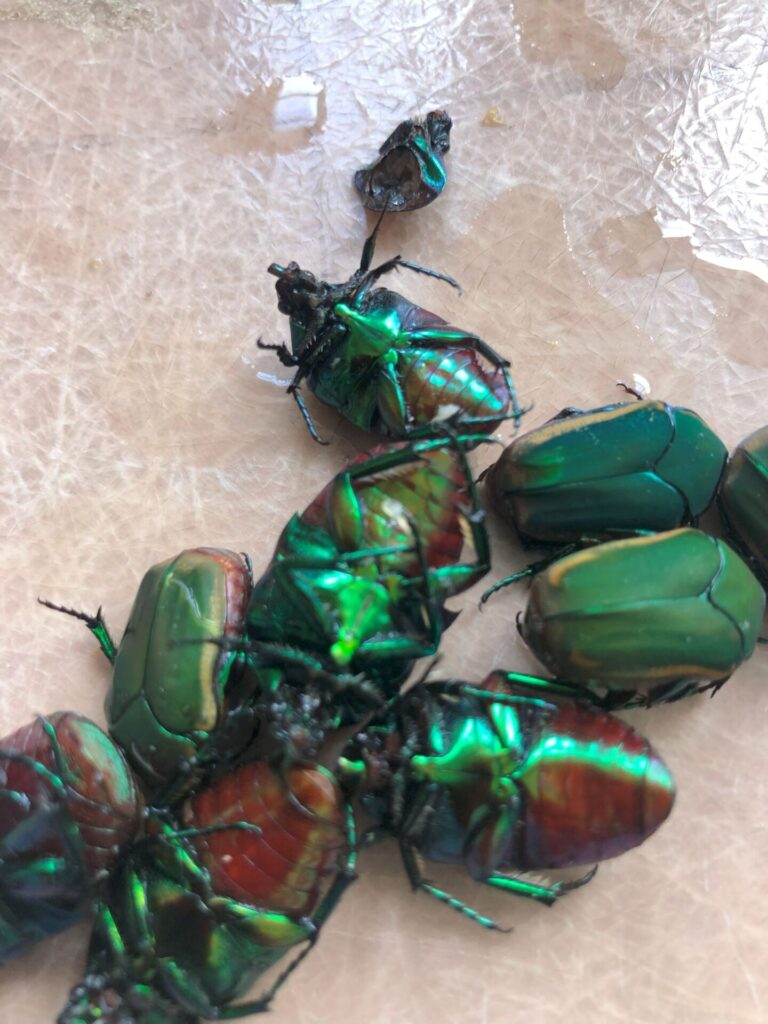
Seeing these iridescent green beauties reminded me of an article I’d recently read by Matt Stirn about Michael Terlep and colleagues’ research on two necklaces that had been found in rock shelters in Bears Ears National Monument and are currently in the collections of Edge of the Cedars State Park Museum. Those were made of parts of similar beetles, apparently Green June beetles (Cotinis nidita). I’m not aware of any such necklaces known from southern Arizona, but people may have made and worn them here, too—we just don’t have as many rock shelters in which they could have been preserved.
When I read the article, it had not really registered that the beads were made of the hind legs of similar beetles. But, seeing hordes of them at the garden, it clicked (pun intended).
Well, you know me—I had to give it a go and try to replicate beetle-leg bling!
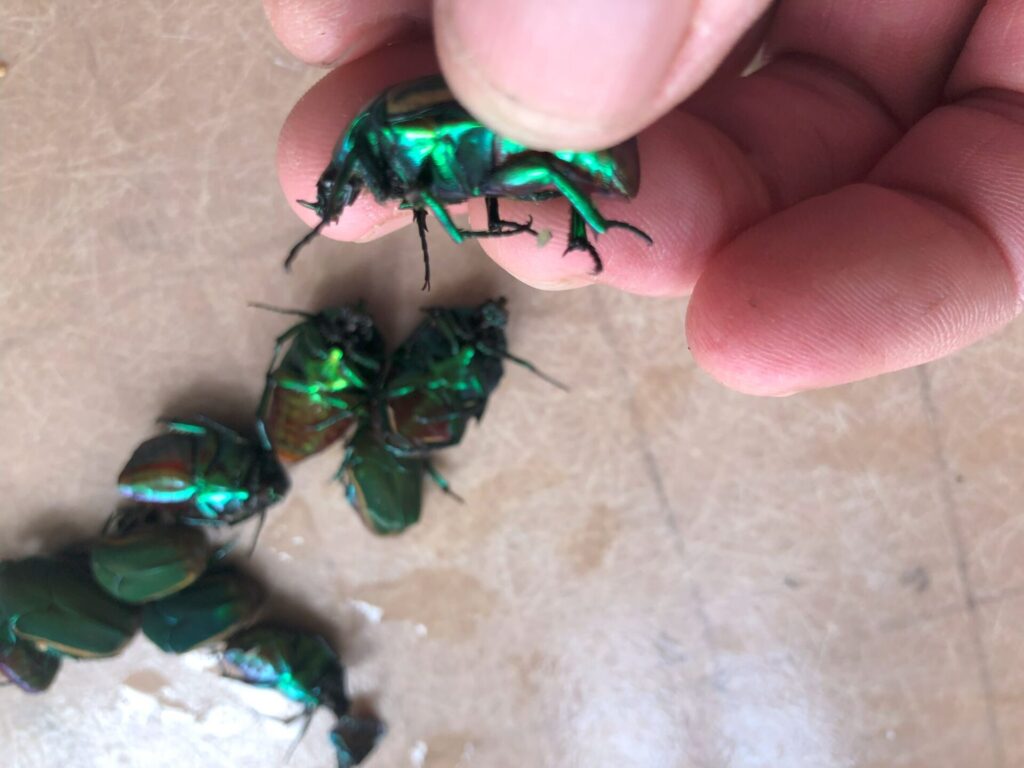
I went around Mission Garden and gathered as many dead beetles as I could. As soon as I realized that people had used the “femur”—which is tiny!—I knew I’d need to collect a lot of bugs. (Technically, beetles don’t have “femurs”; they have exoskeletons with meat and muscle on the inside. The beads were made of the beetles’ back legs, so that meant two beads per bug!)
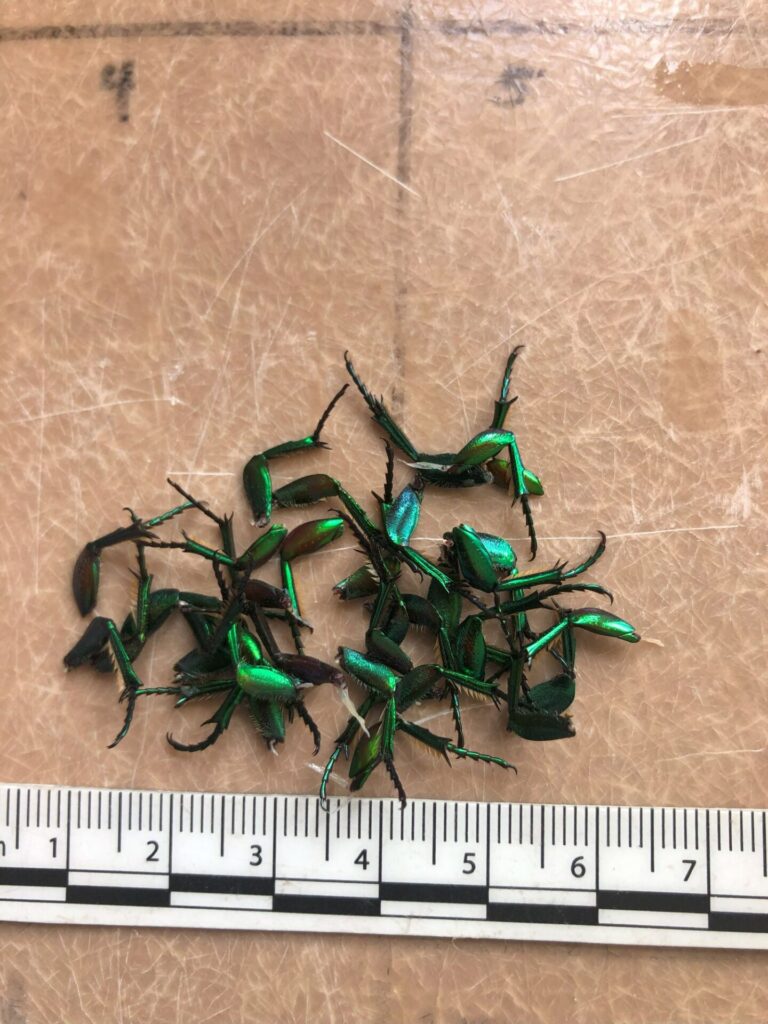
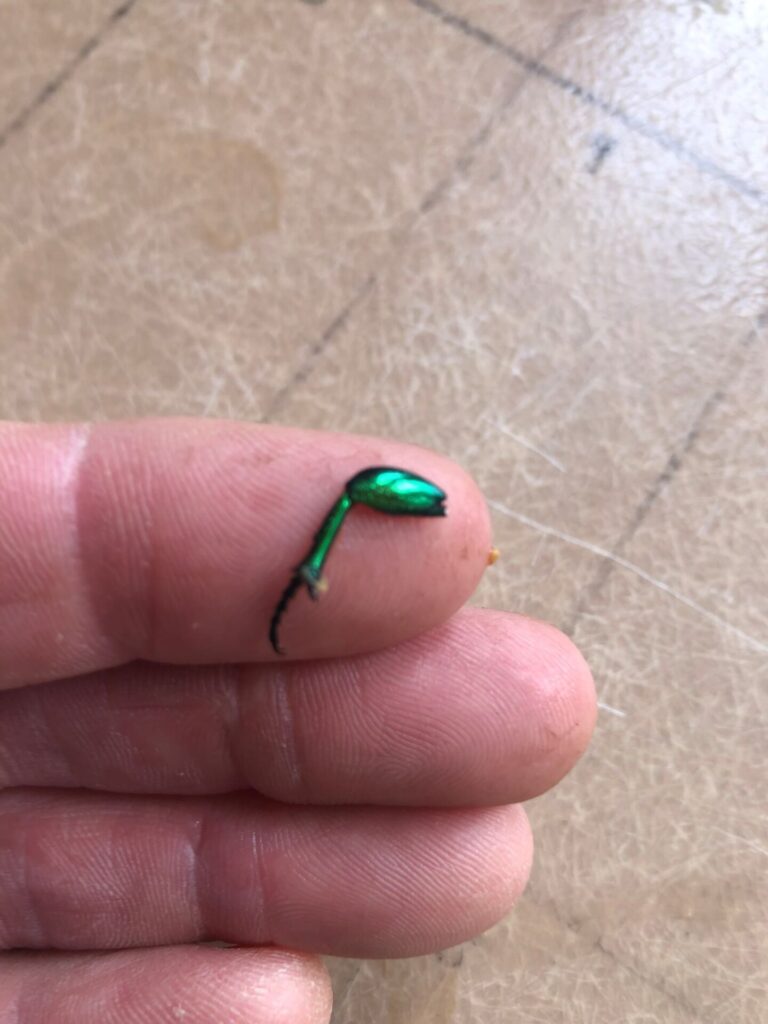
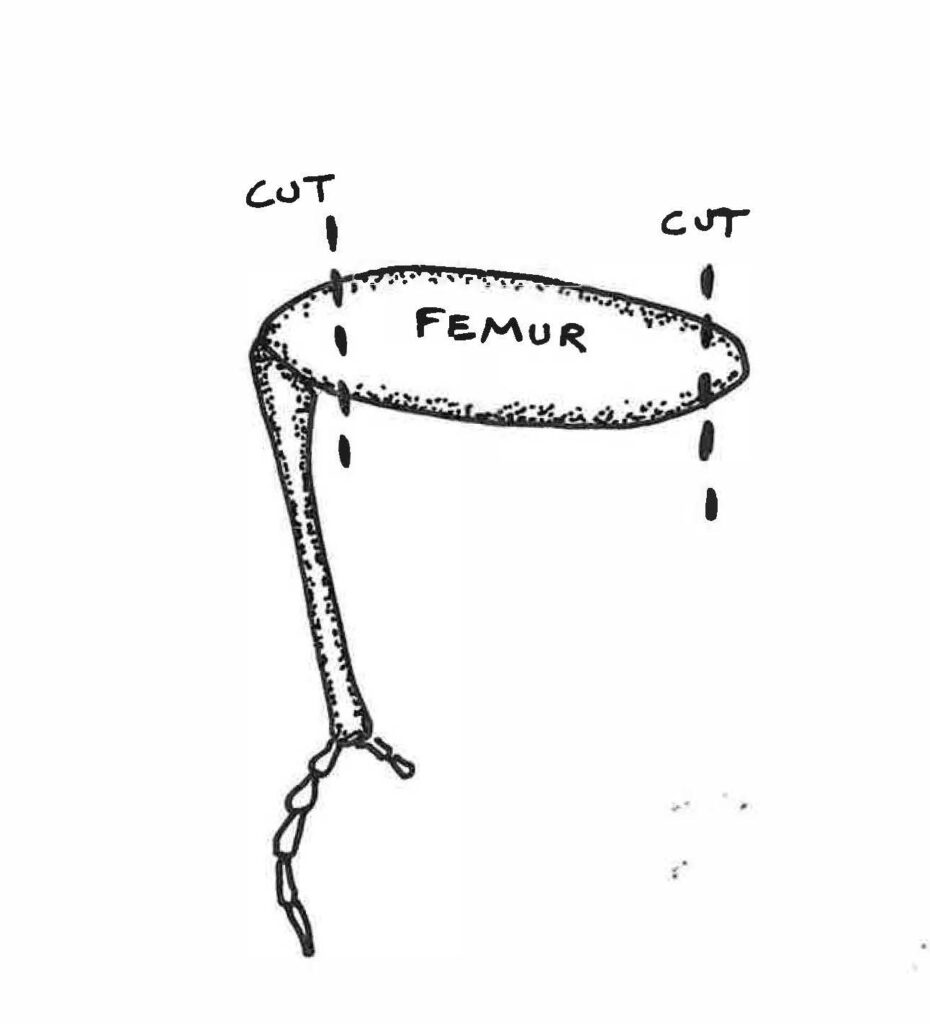
In order to do my best to replicate how I think people made these, I used biface thinning flakes as scalpels for cutting the ends of the leg segments off. I found that the flakes worked well and allowed me to cut hundreds of legs before the flake edges dulled.
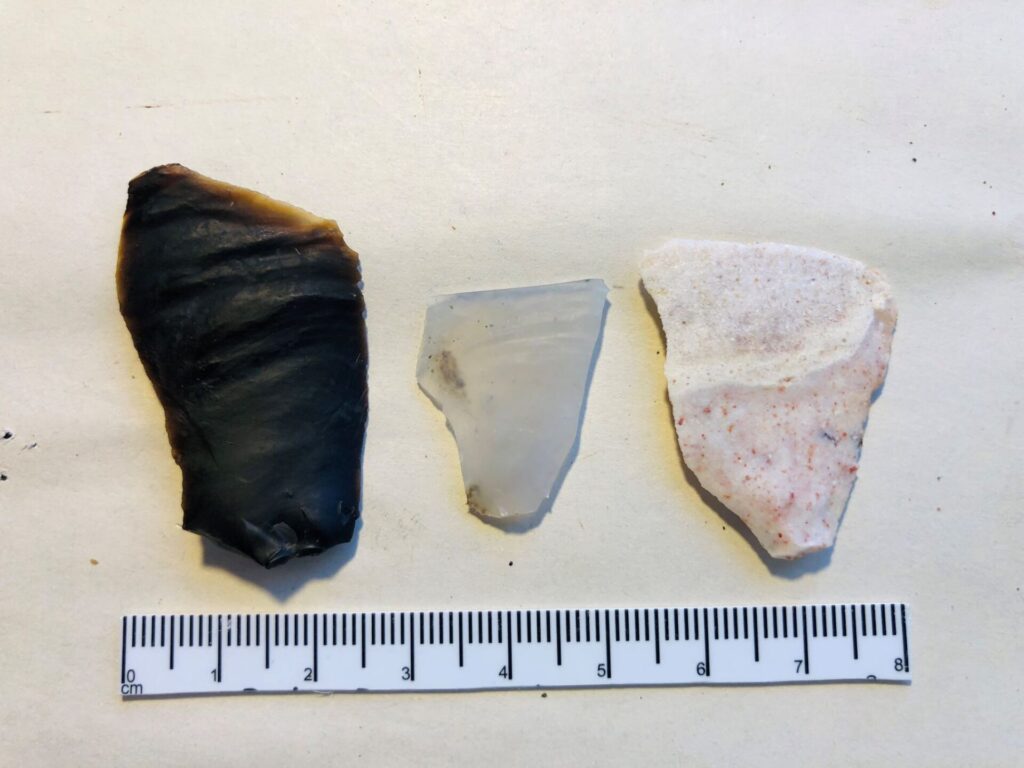
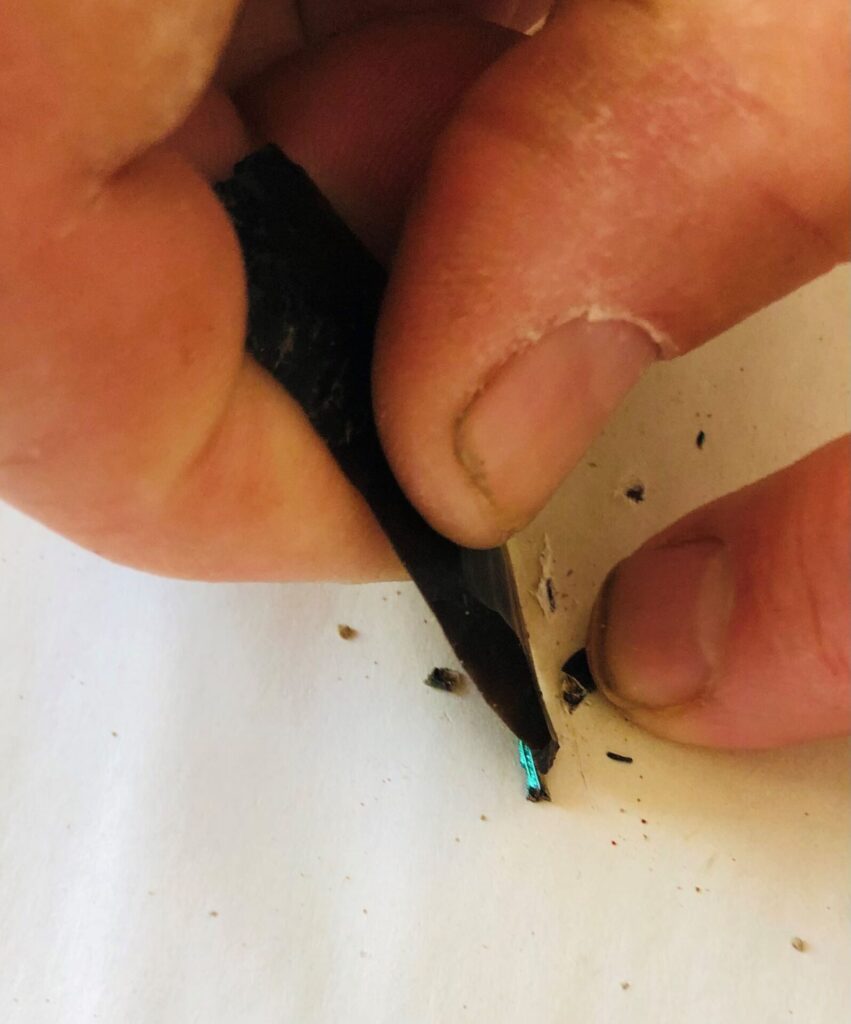
You’ll also need some cactus spines or thorns to stick the femurs on. This is so they open up and dry with a nice hole (perforation) down the middle. Size-wise, I found the thorns from the prickly pear cactus to be just right. (Here I did use modern pliers to pull the spines from dead cactus pads.)
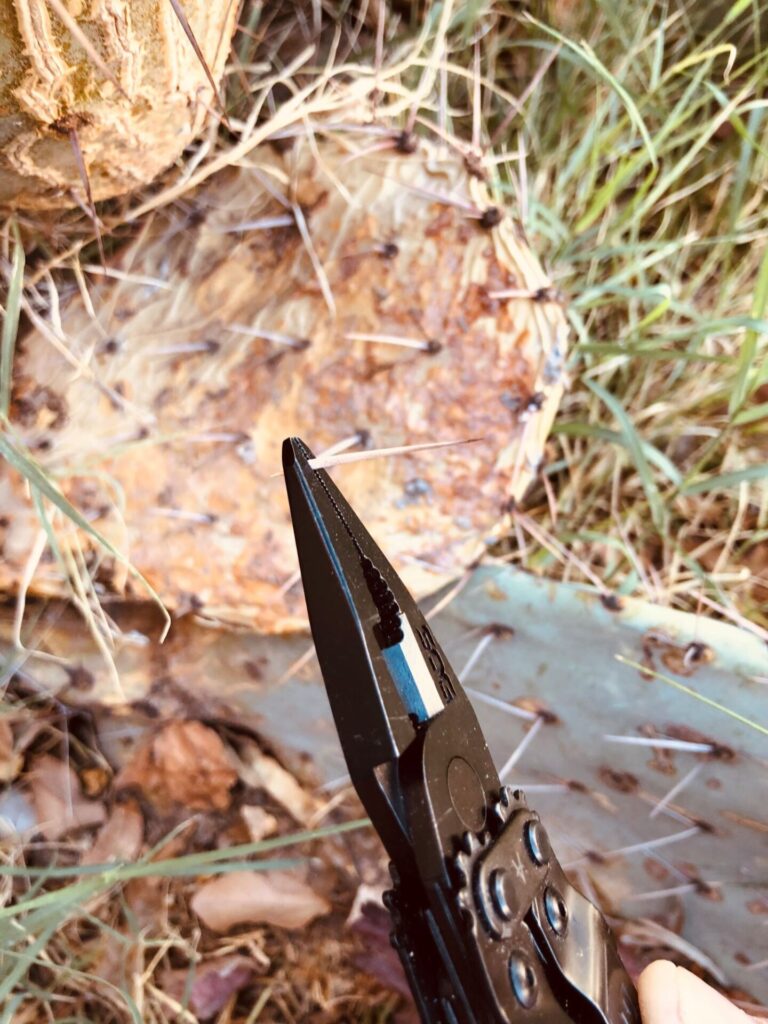
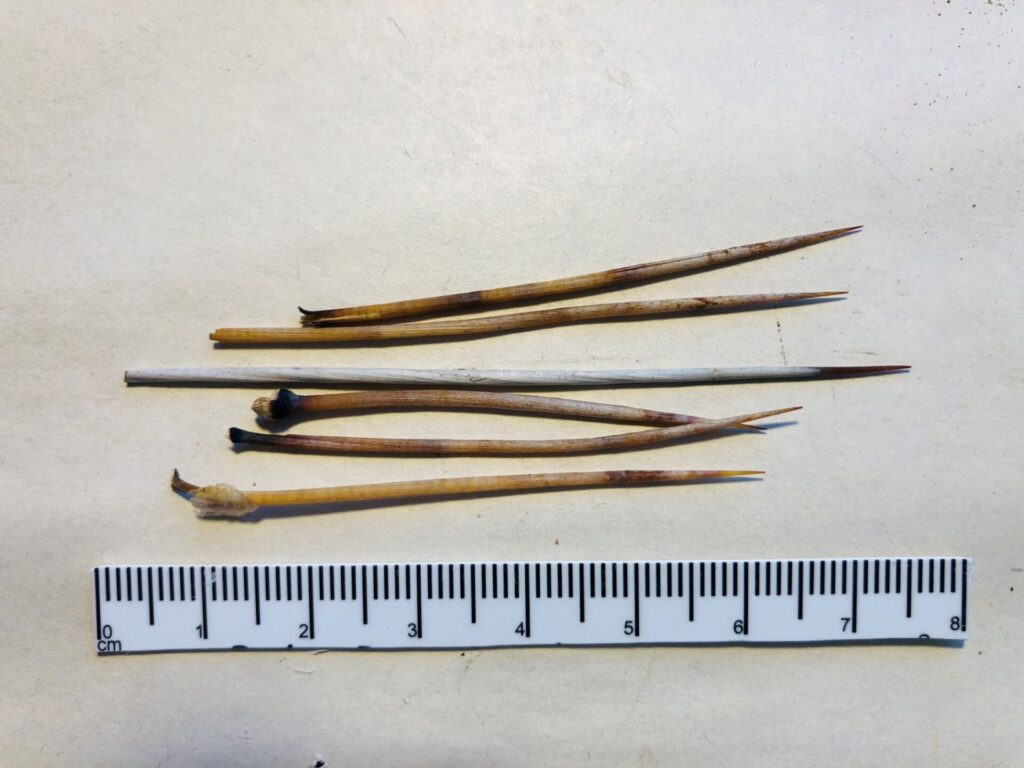
Cactus thorns really are the secret! Naturally, the femurs are thin in cross-section, so they require a means of opening them up. This is best done while the leg segments are fresh and moist. When they are too dry, the bead splits on the long axis.
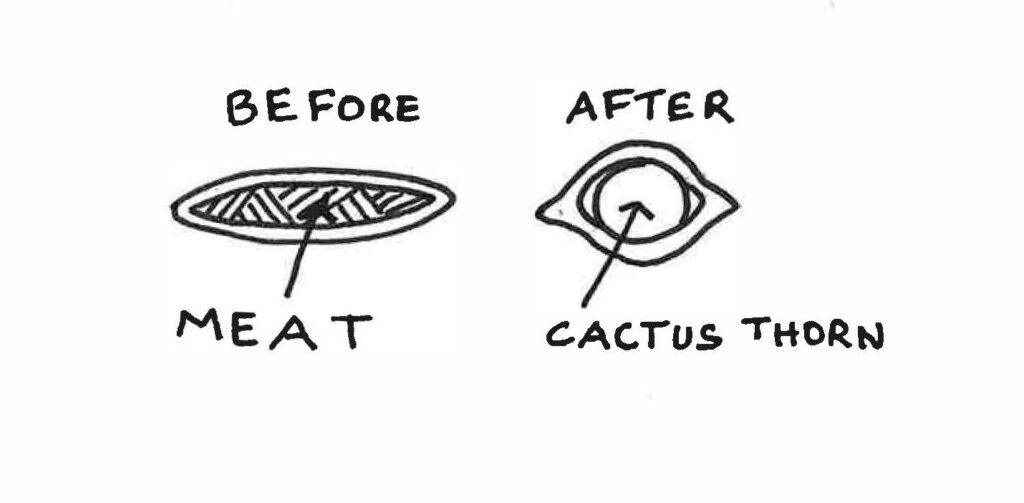
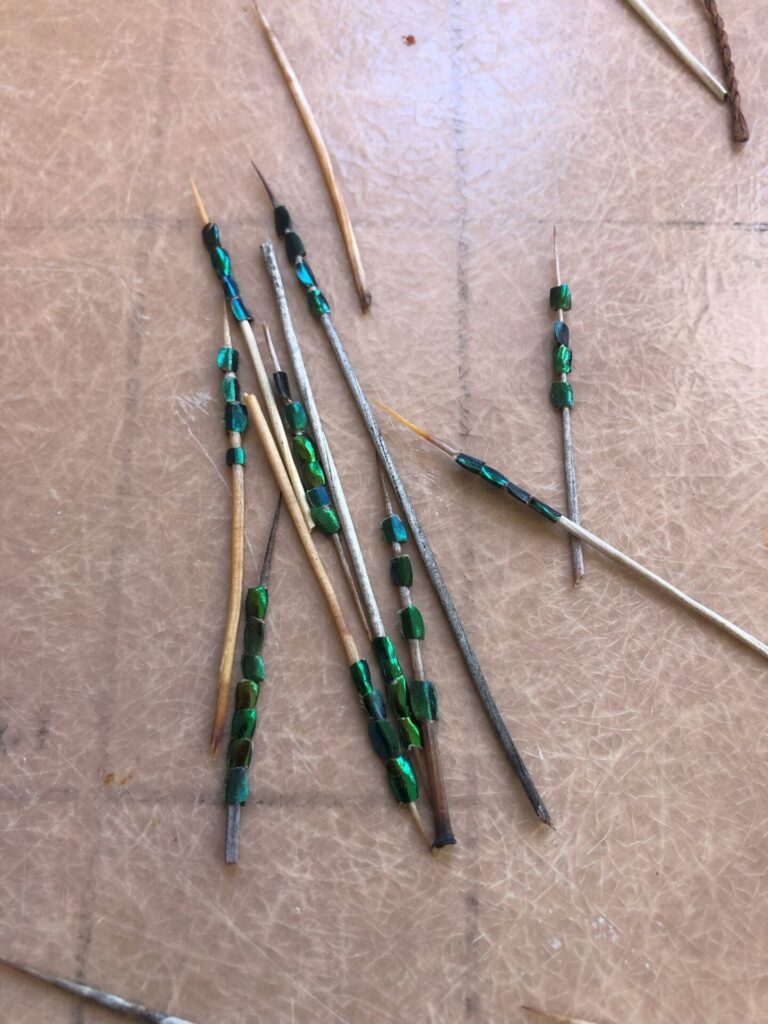
Next, I let them dry out on the thorn. When you go to pull them off, be aware that you’ll have to slowly ream them out a bit with the spine to get rid of any “leg jerky” left inside.
You should end up, as I did, with a bead that has a nice opening that can be strung on a fine piece of cordage.
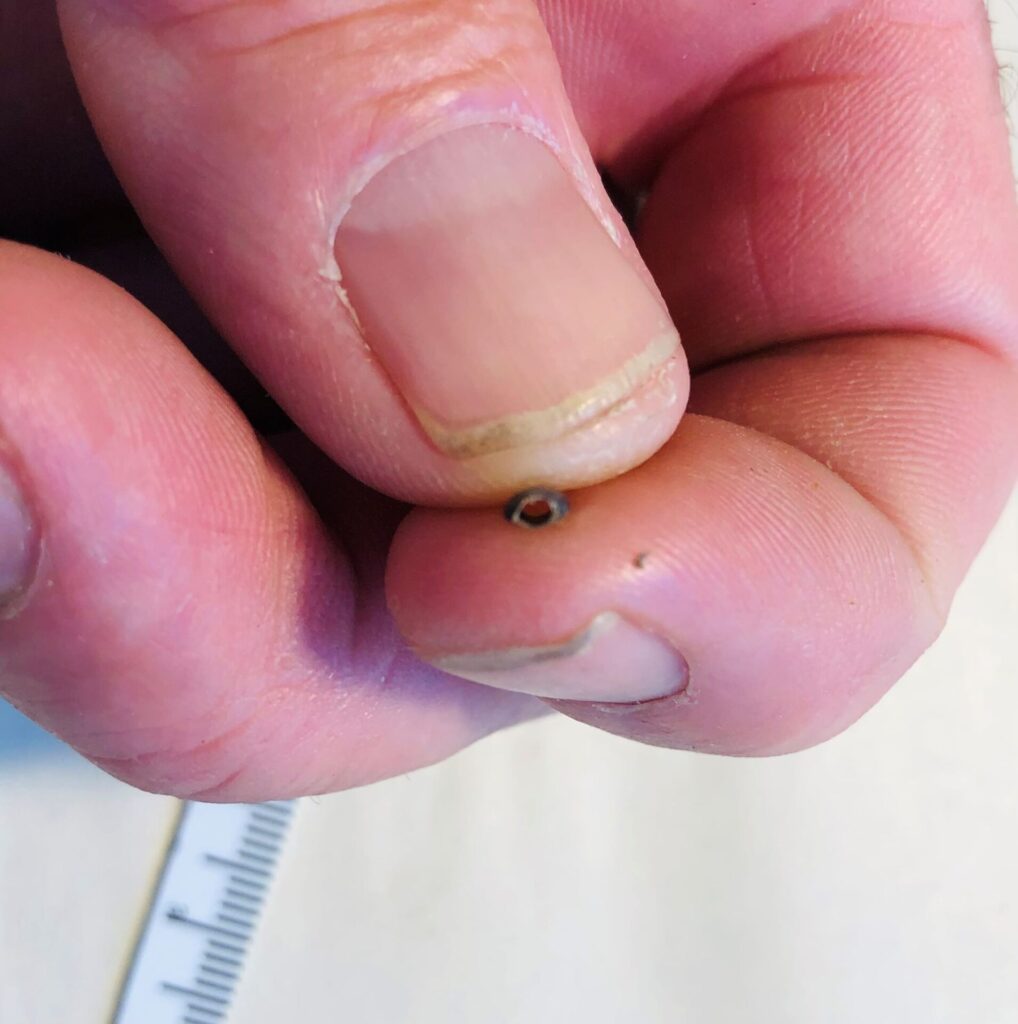
I made my cordage out of dogbane, but you can use any plant fibers, so long as they spin up fairly finely.
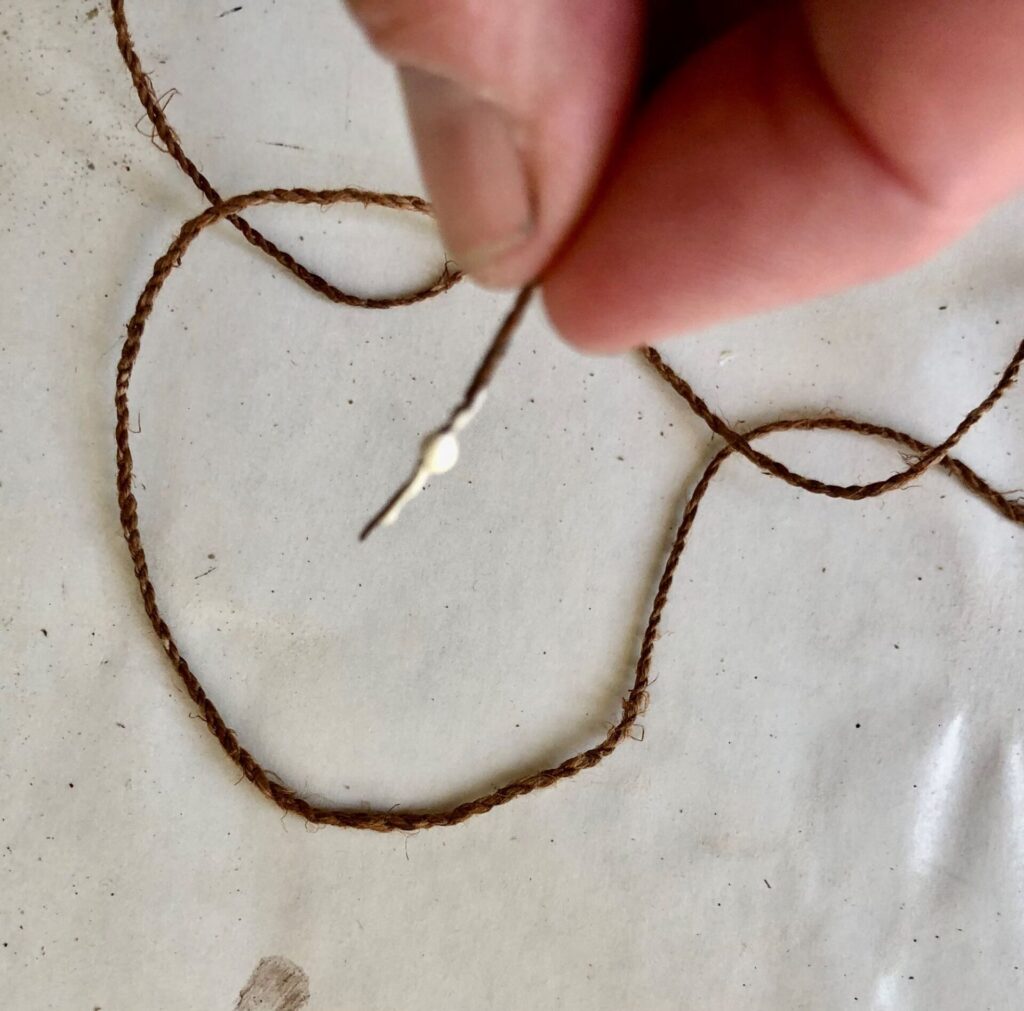
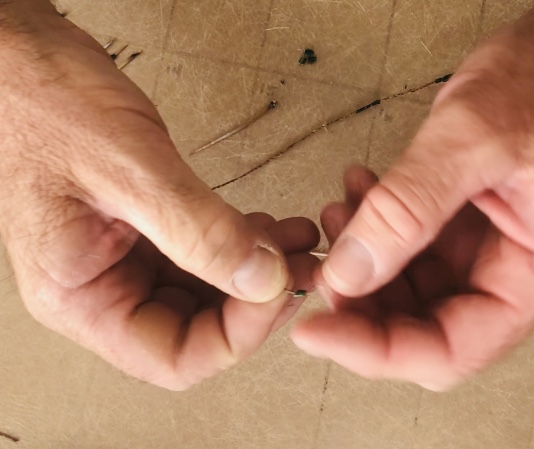
It took me 75 beetles to finish a short necklace. Analysts estimated that the ancient examples used more than 100 insects per necklace. One of the recovered examples also has a shell pendant.
Let me know how yours turn out! Send pictures! Let me know how many new friends you make when you wear yours out and about!
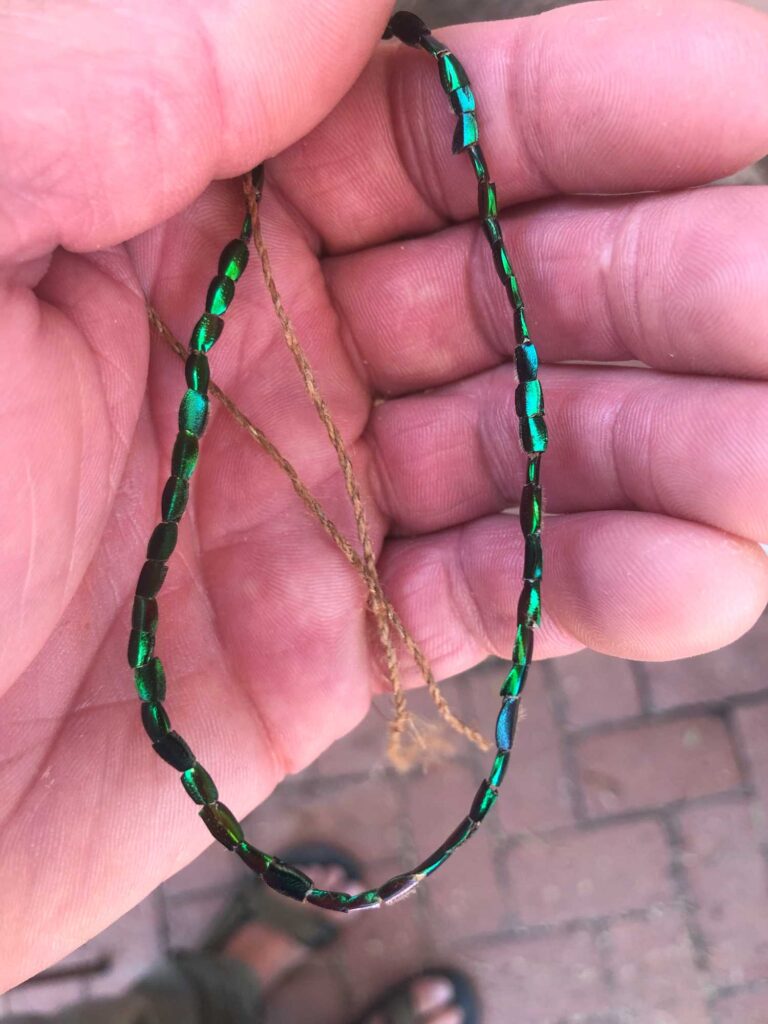
UPDATE: Since I submitted this post, I had an entomologist in my flintknapping class two weeks ago. He is actually studying these beetles and is saving me their legs now. I really hope I can do a Hands-On Archaeology class on how to make these, and I especially hope I can teach this to our field-school students!
3 thoughts on “Bug Bling! How to Make a Necklace out of Beetle Legs”
Comments are closed.
Explore the News
-
Join Today
Keep up with the latest discoveries in southwestern archaeology. Join today, and receive Archaeology Southwest Magazine, among other member benefits.

Great blog entry, Allen. As always!
In the 1940s an uncle in Mesa used to take the live June bugs (yes, it is difficult to update vocabulary), tie a thread under the wings and fly them around their yard at their house at the Mesa, Arizona Experimental Farm. Afterwards, the thread would be cut away on top of the wings and the June bug would fly away.
When I was a child, we would capture June Bugs and tie a piece of thread to a leg. The thread would be tied onto a safety pin (I don’t recall but surely that was the first step) then pin the June Bug to a shoulder where it would crawl around like mobile brooches or try to fly. I don’t remember, 70 years later, just when or how we released them. Sad to think how cruel that was to the insect, and likely crippled it as well.